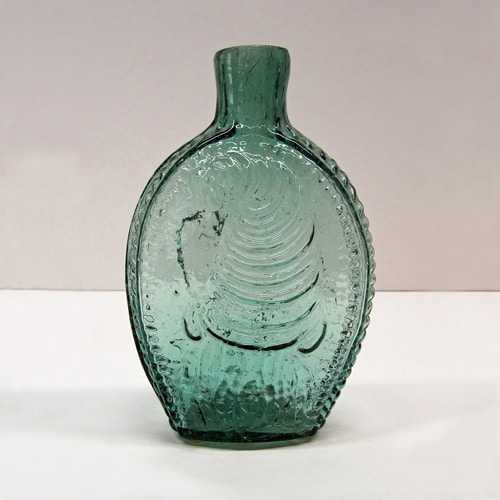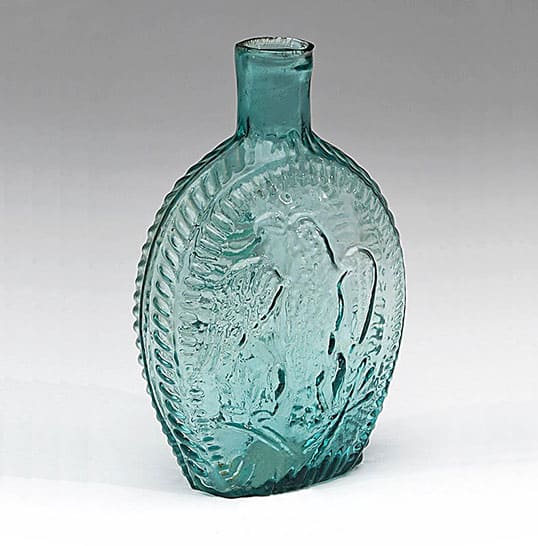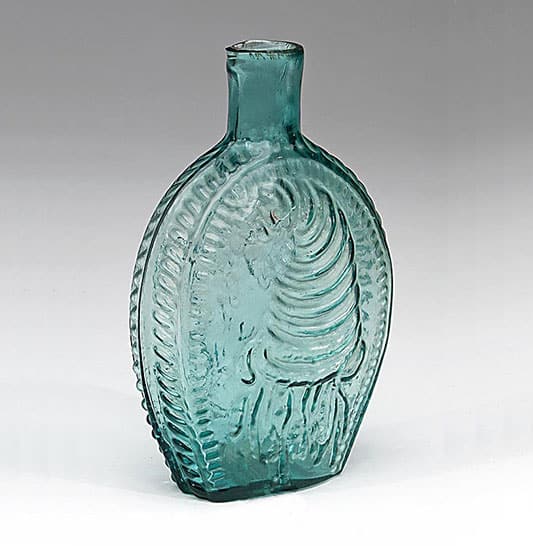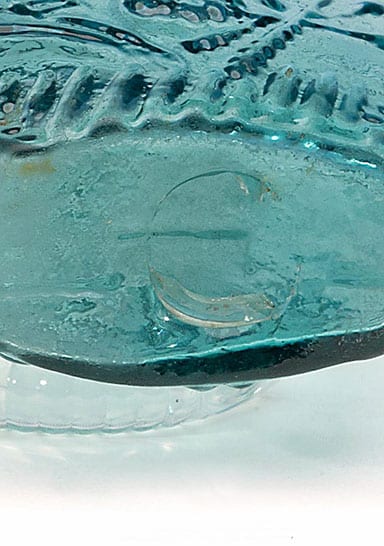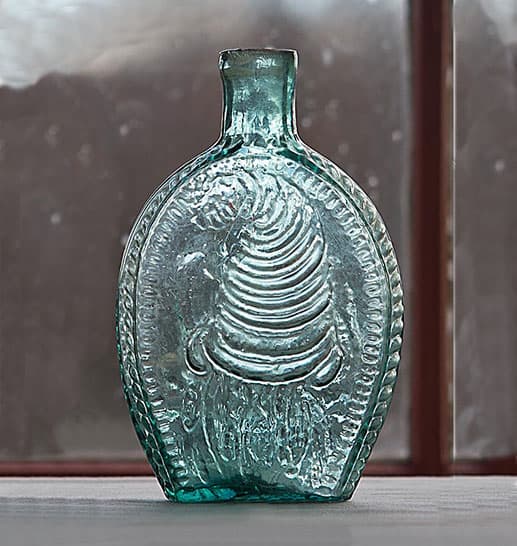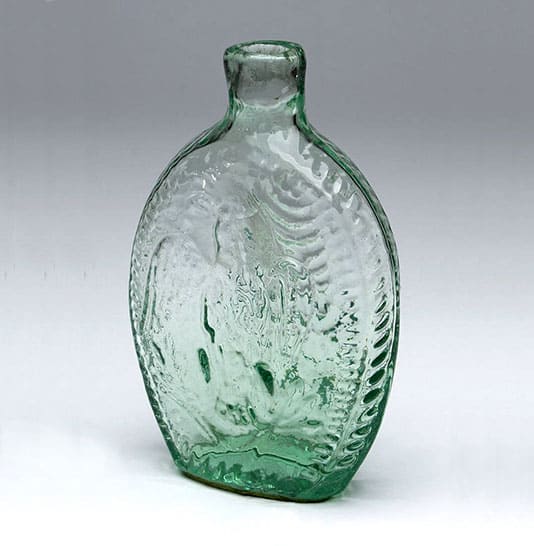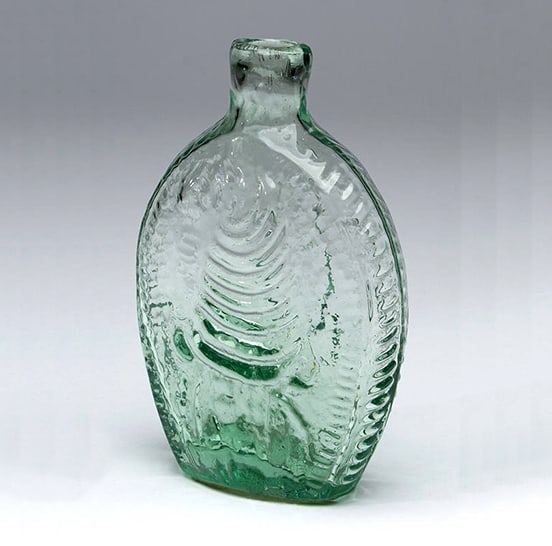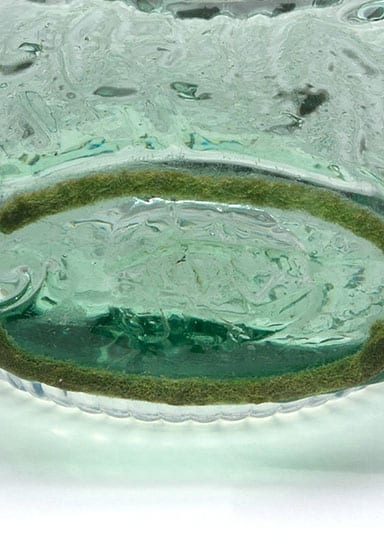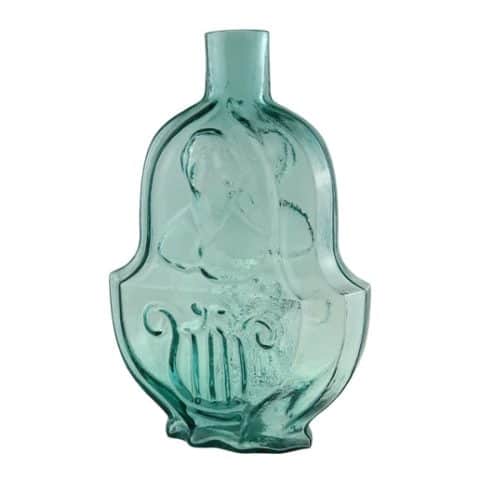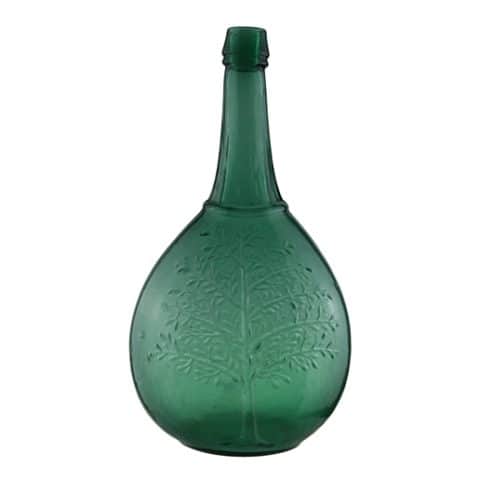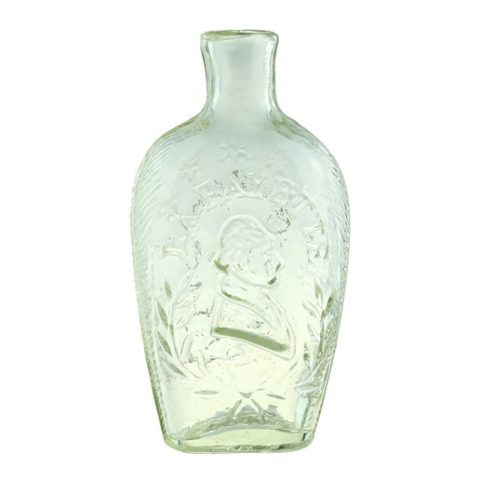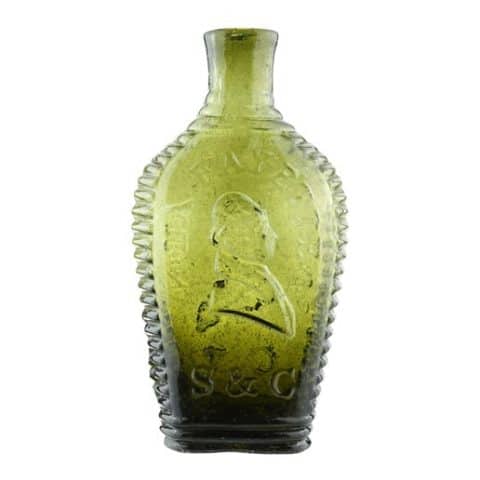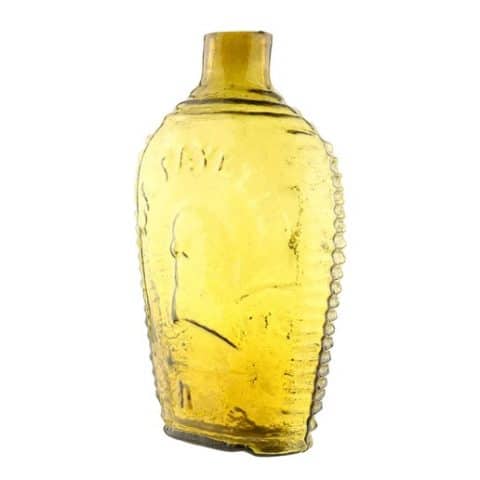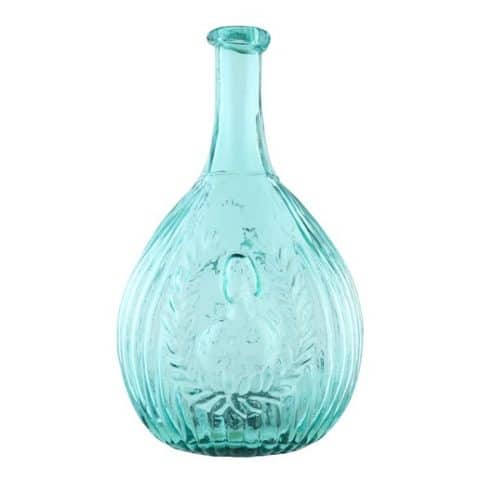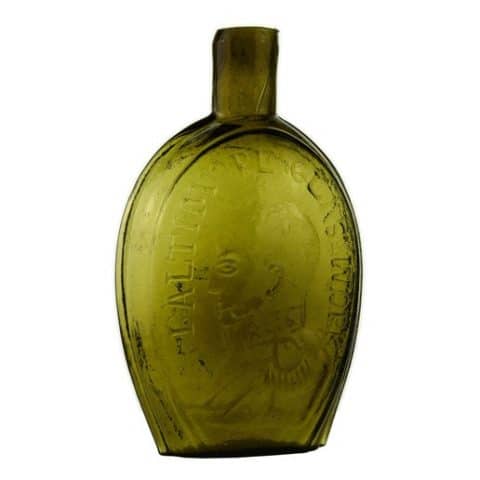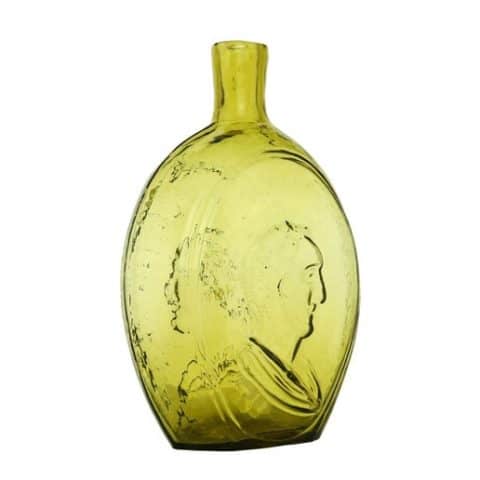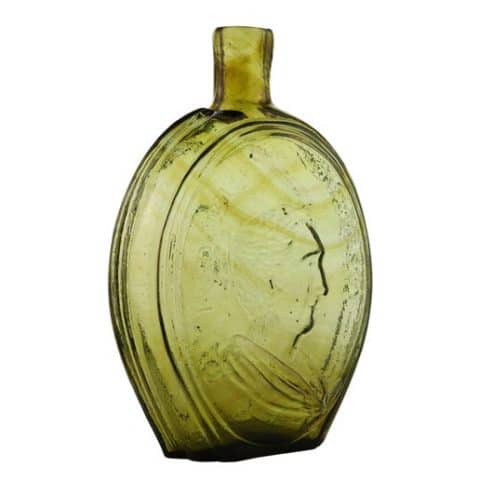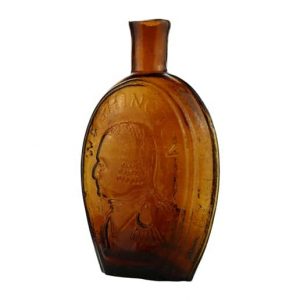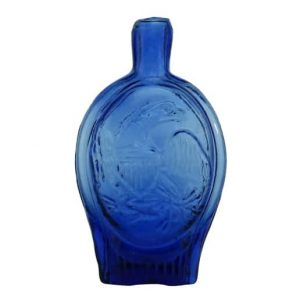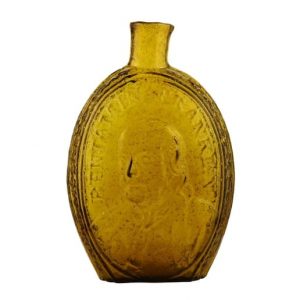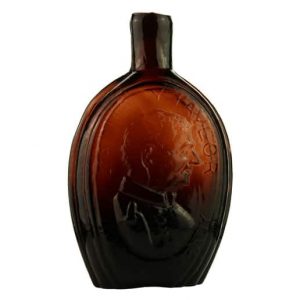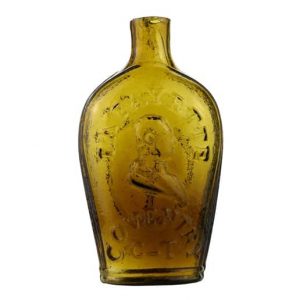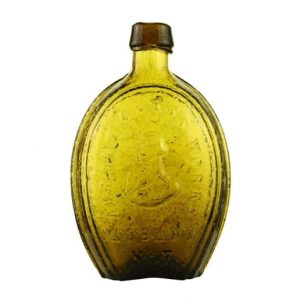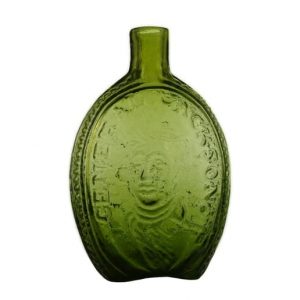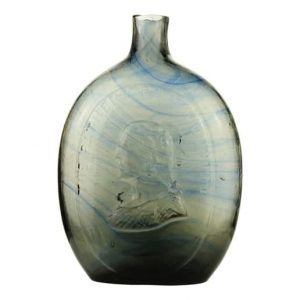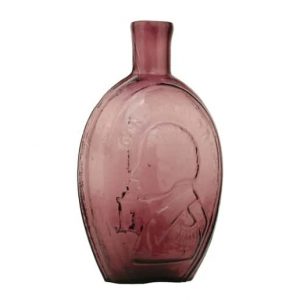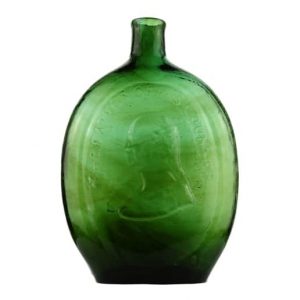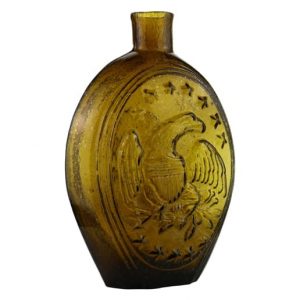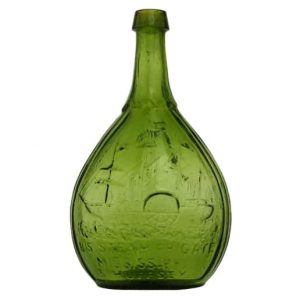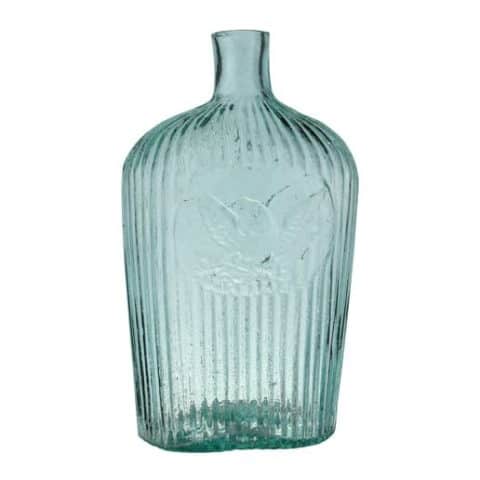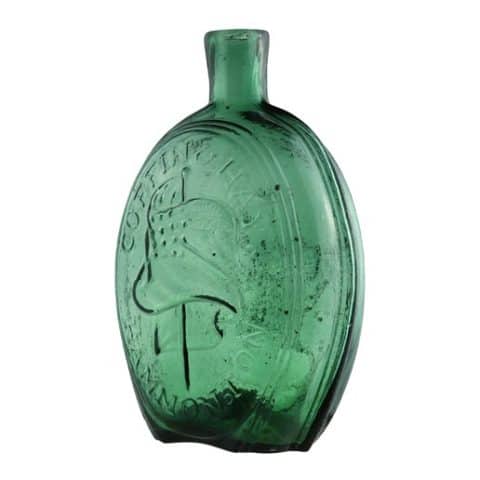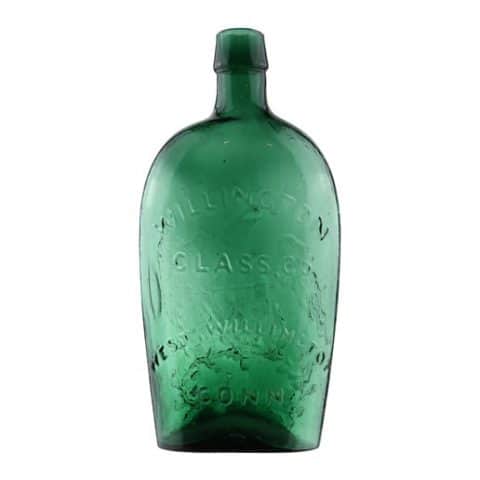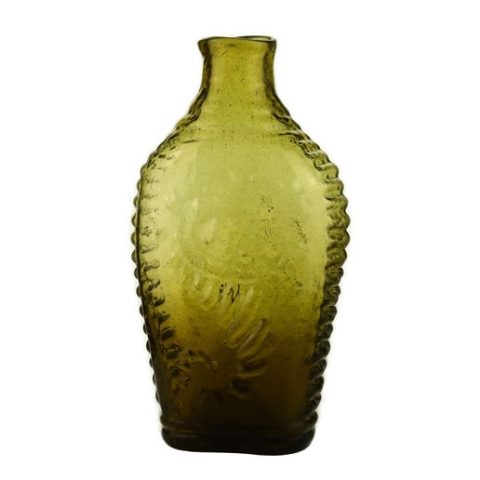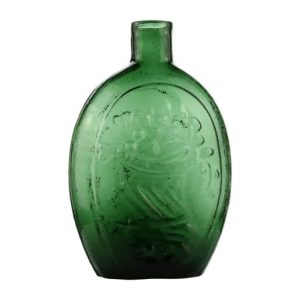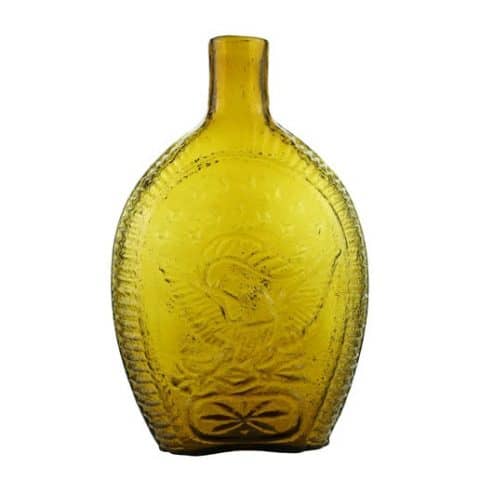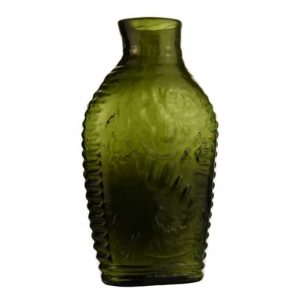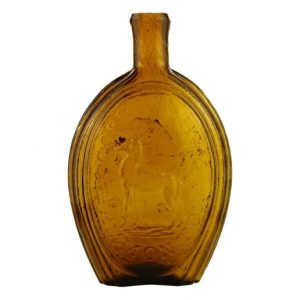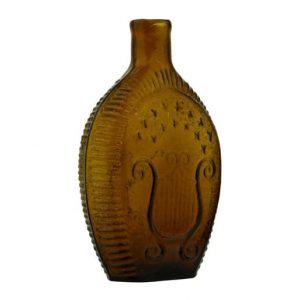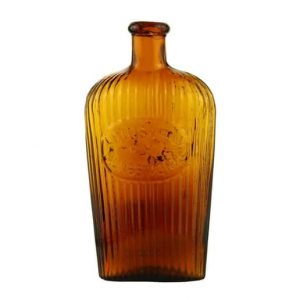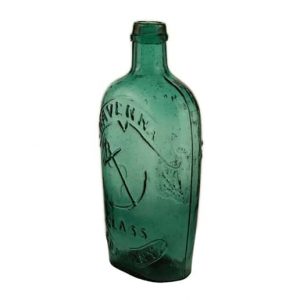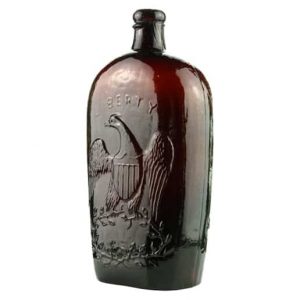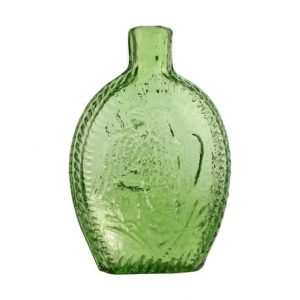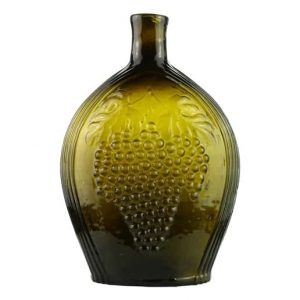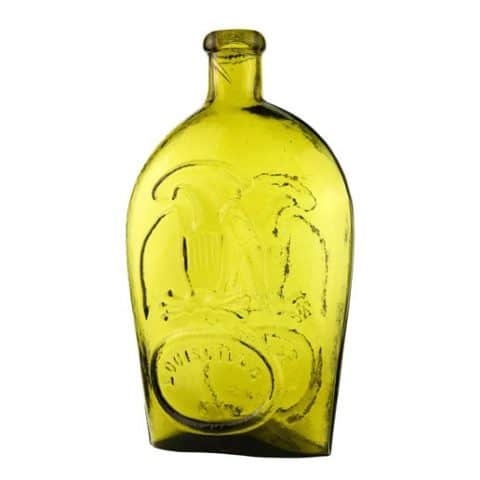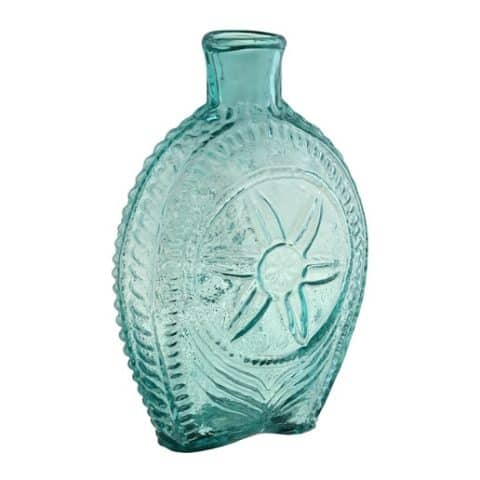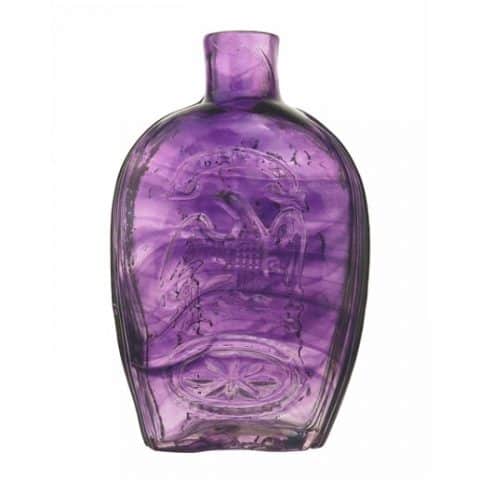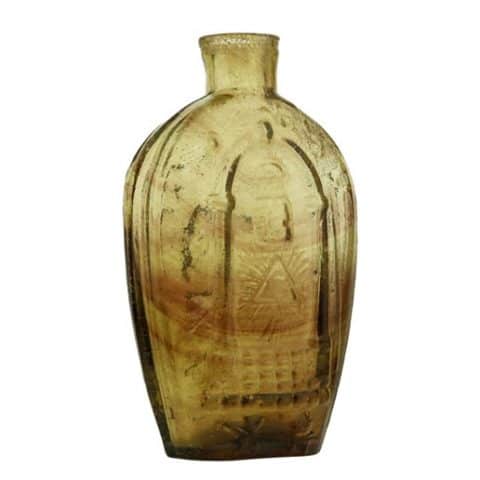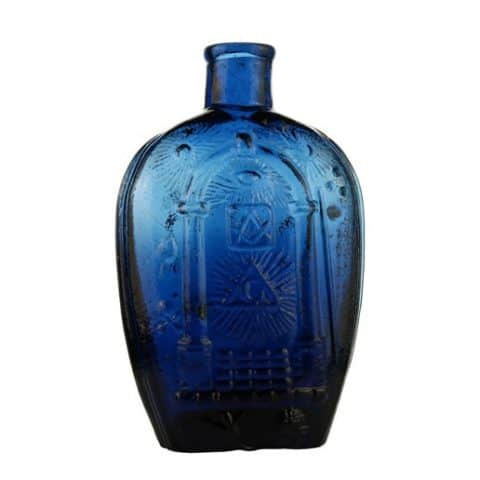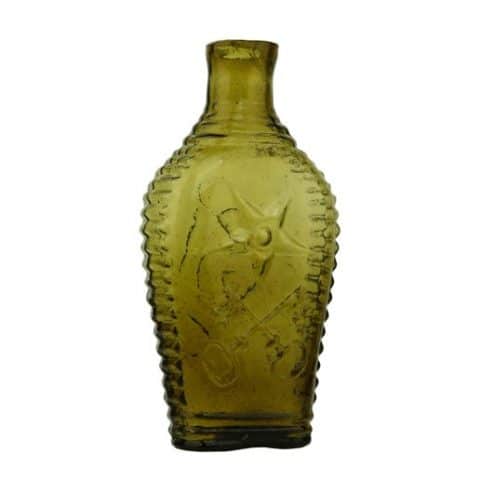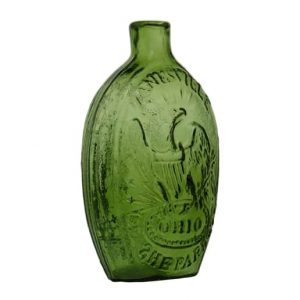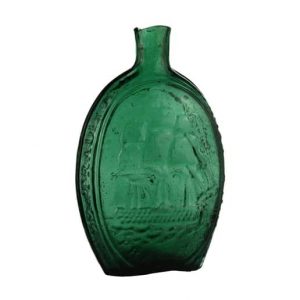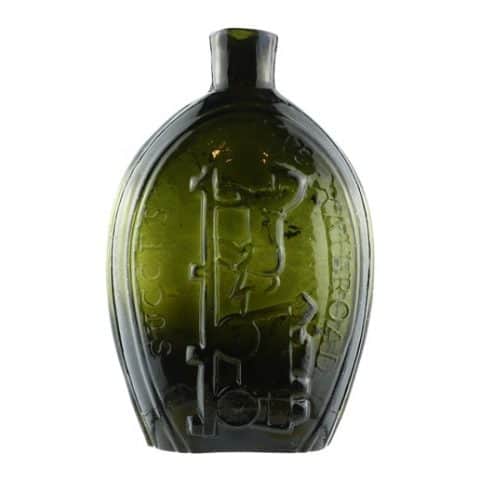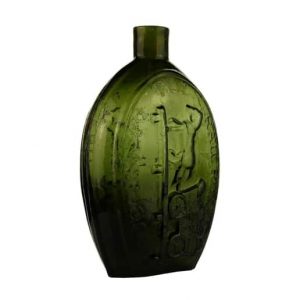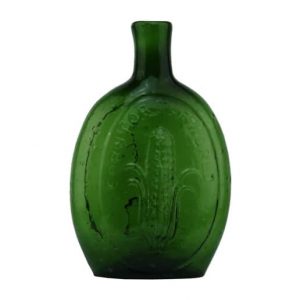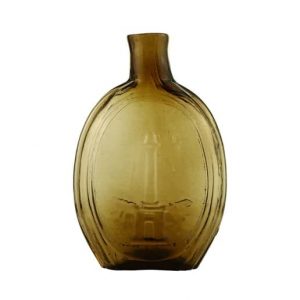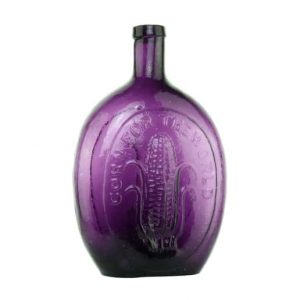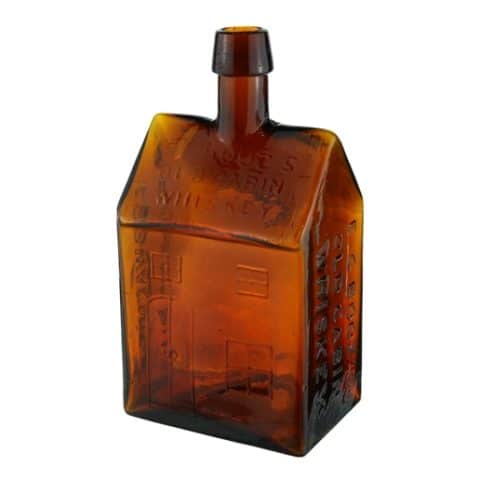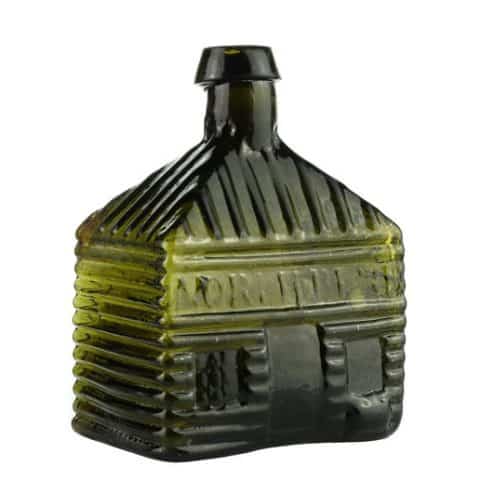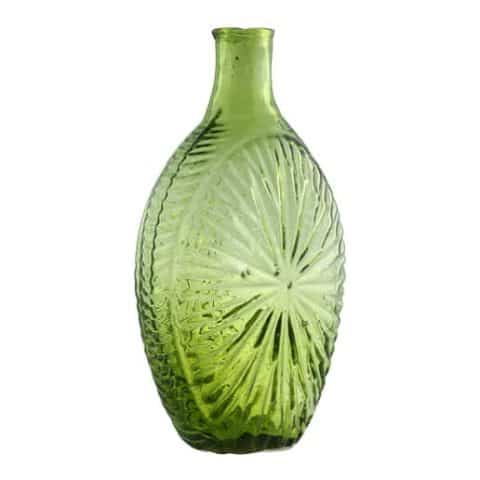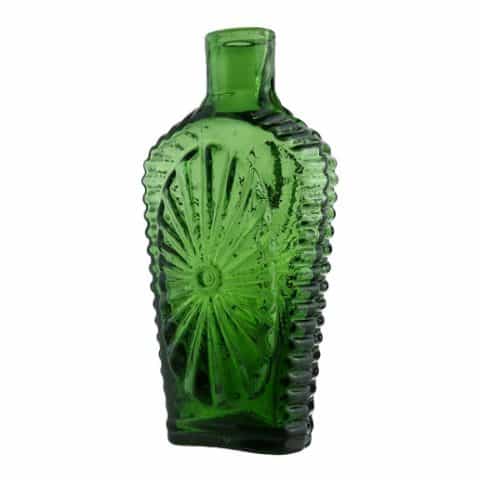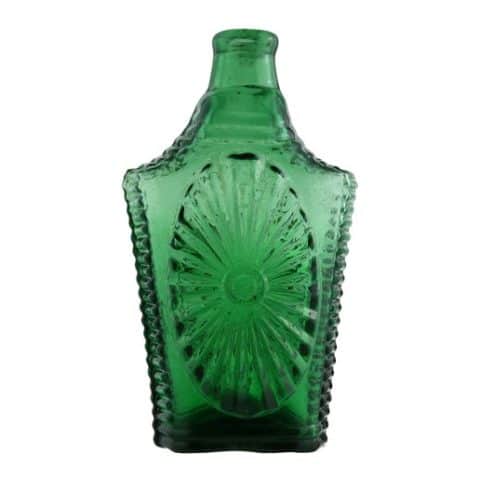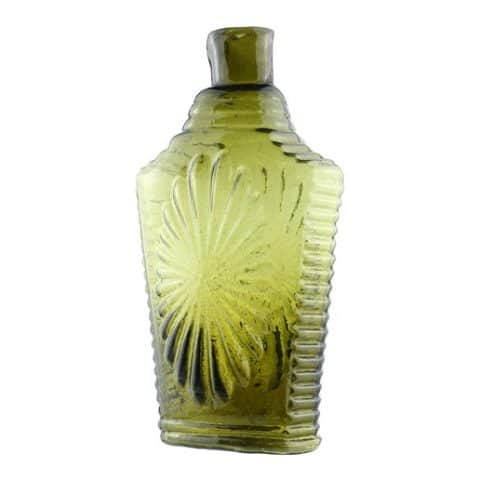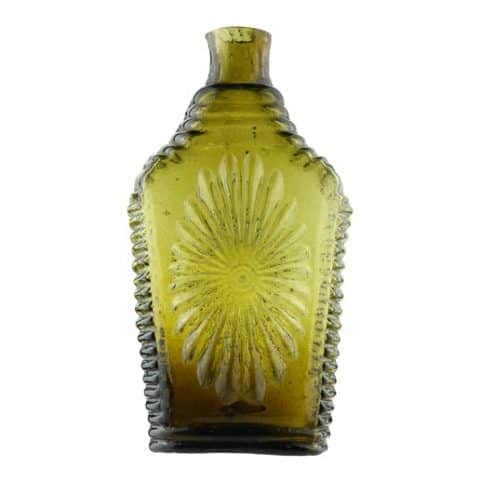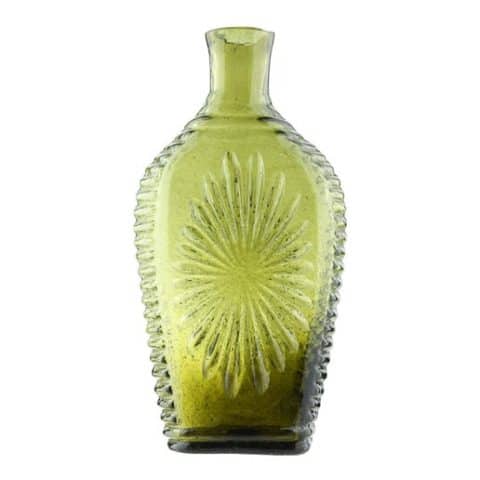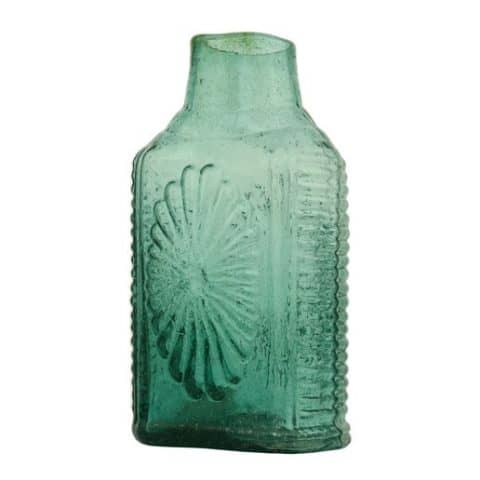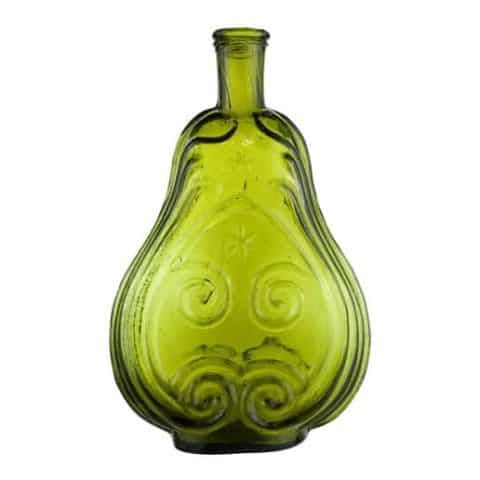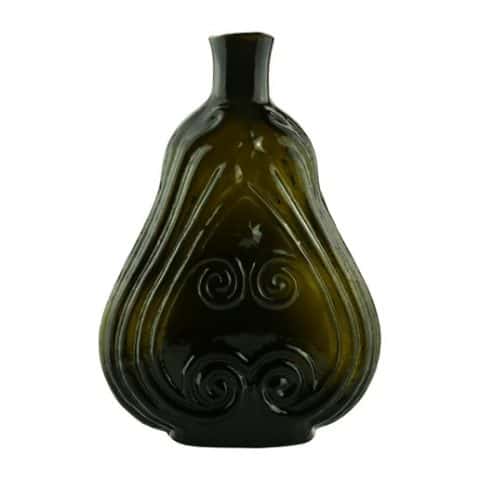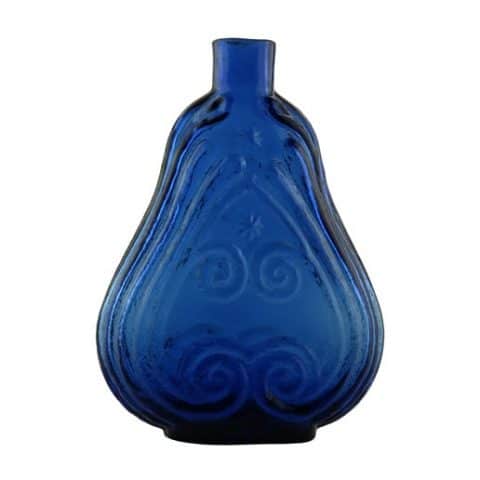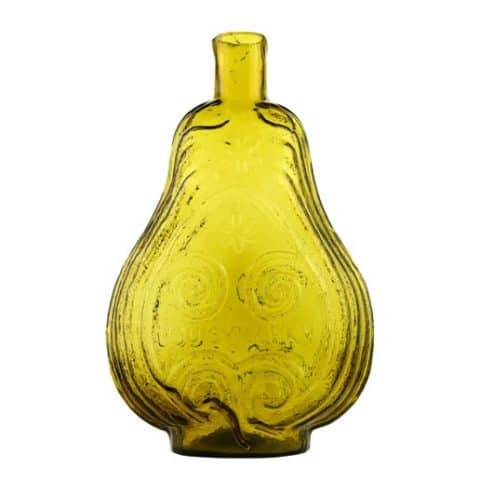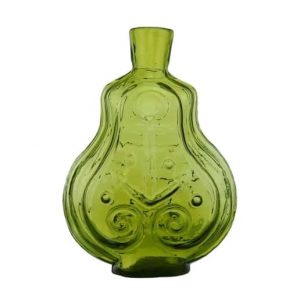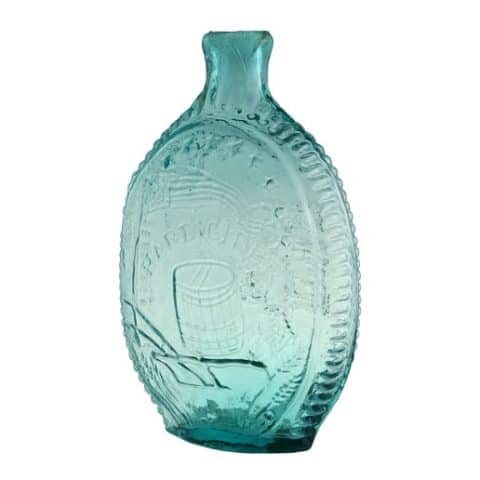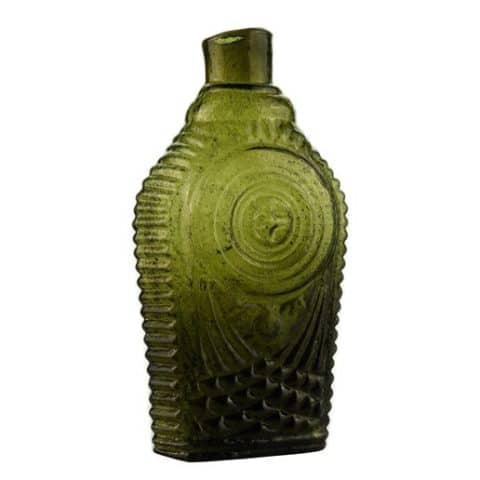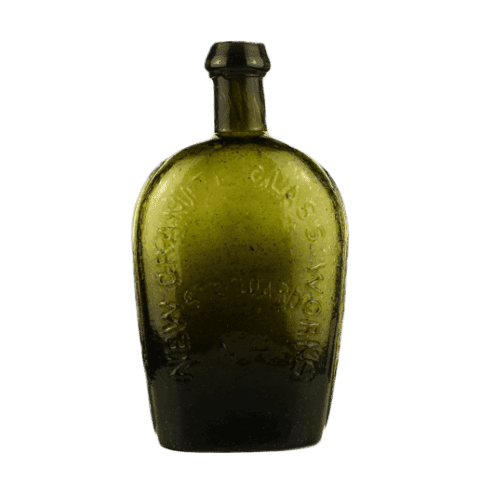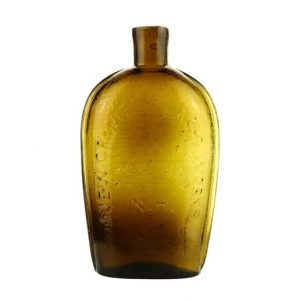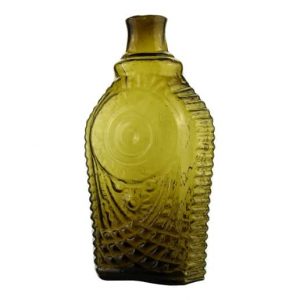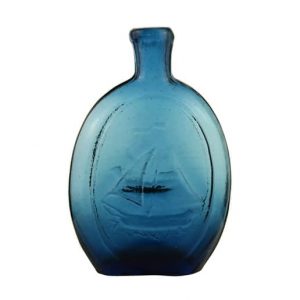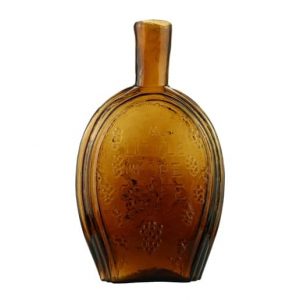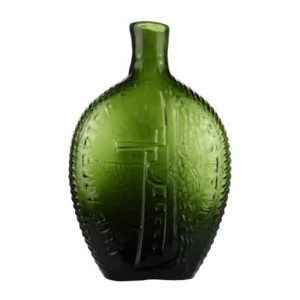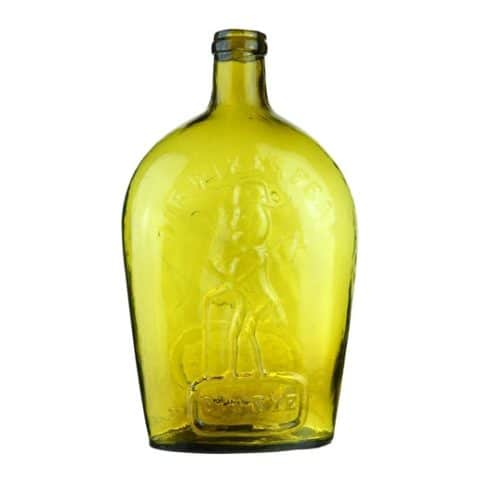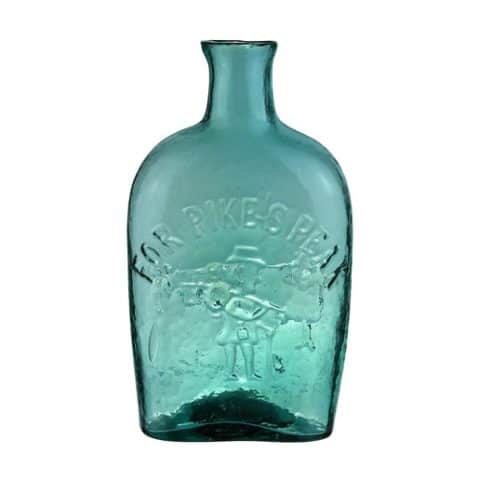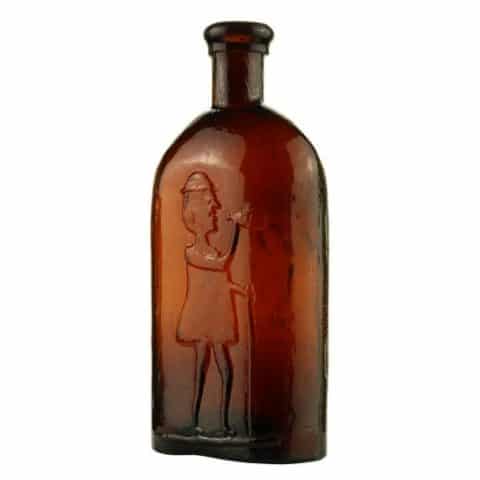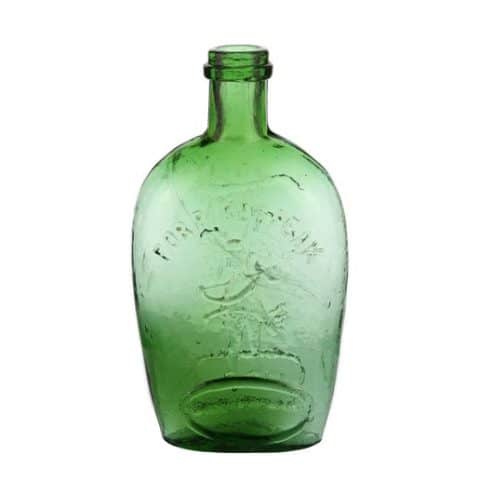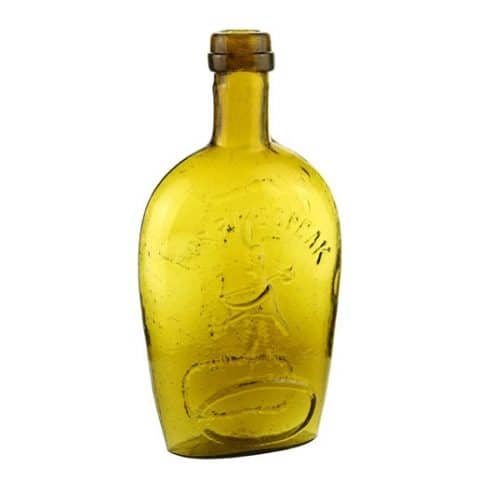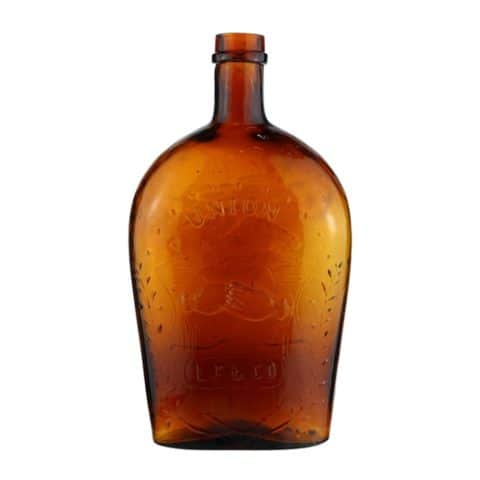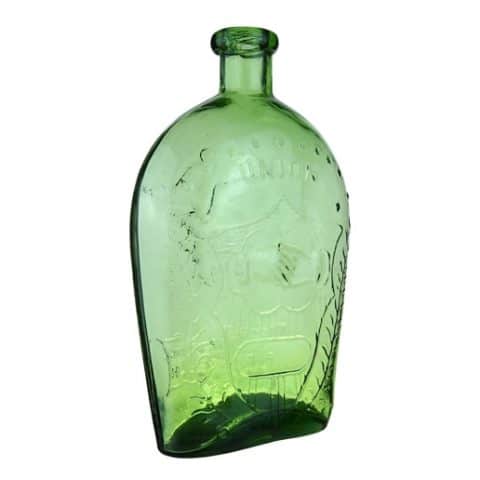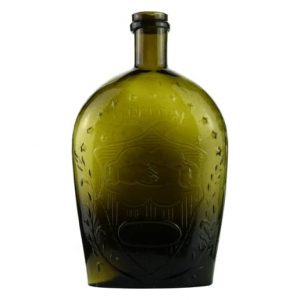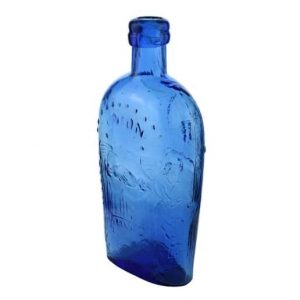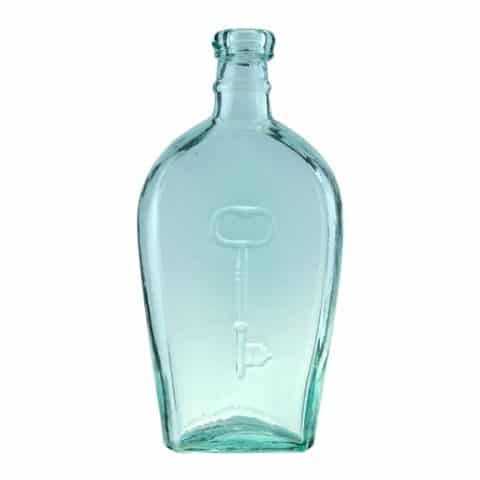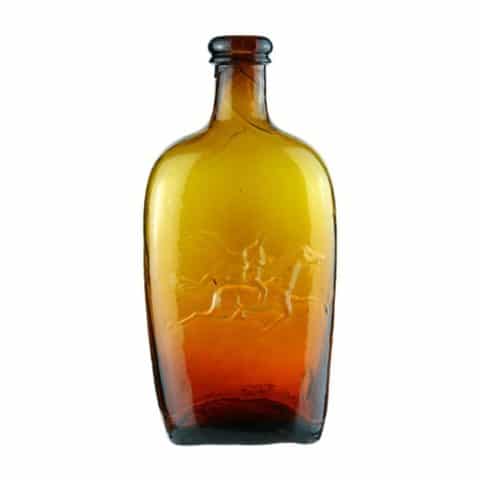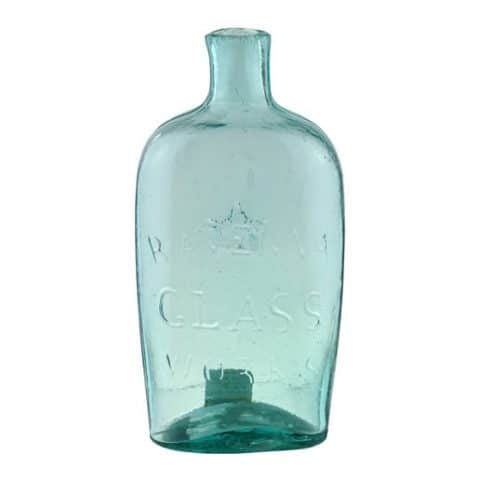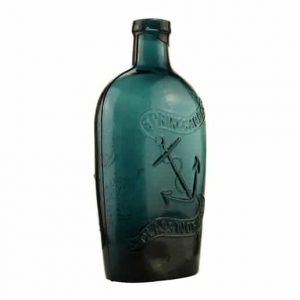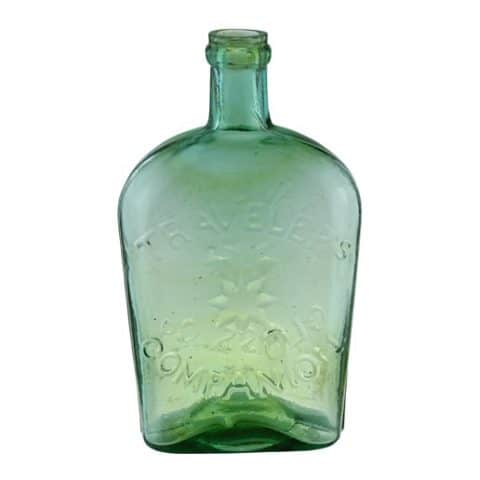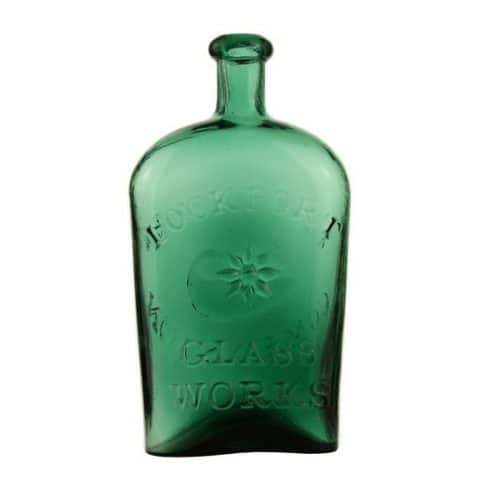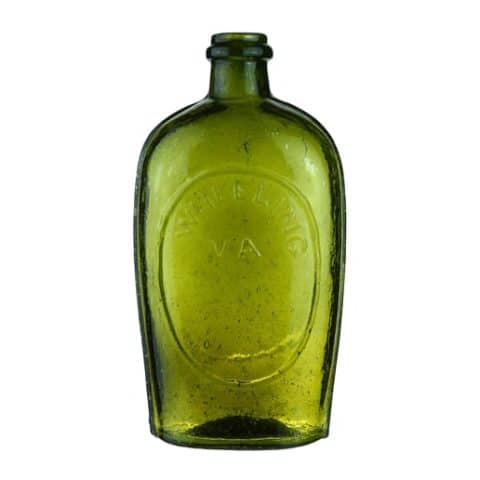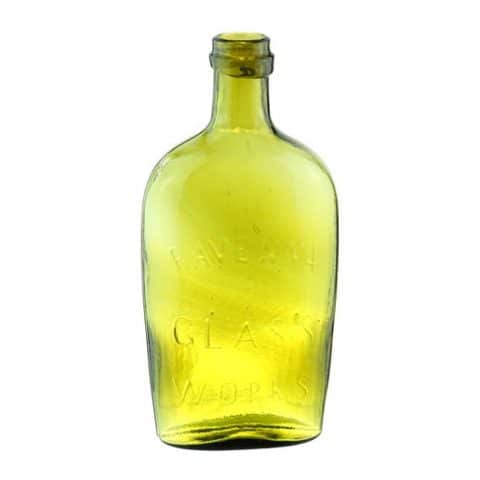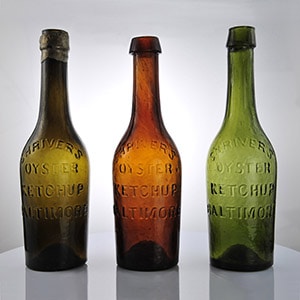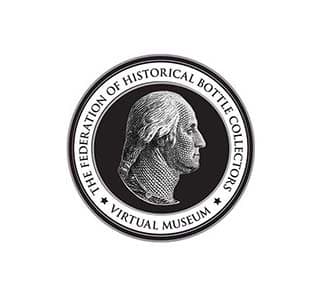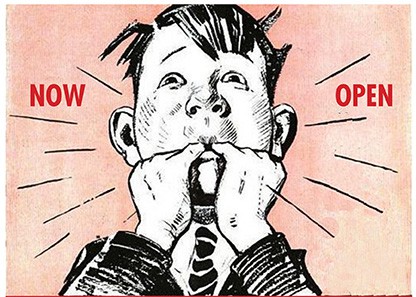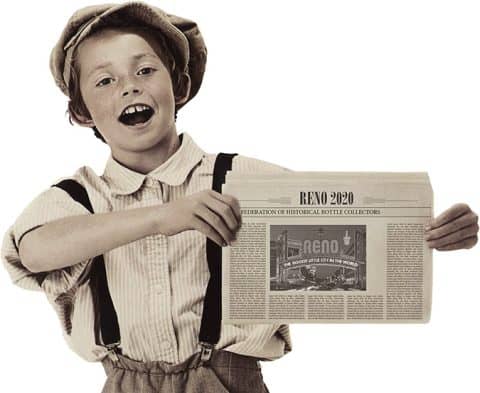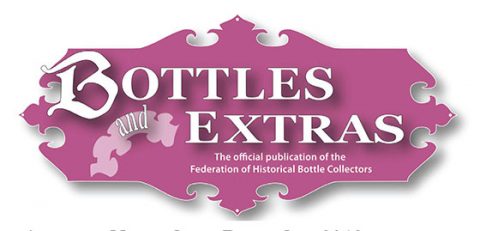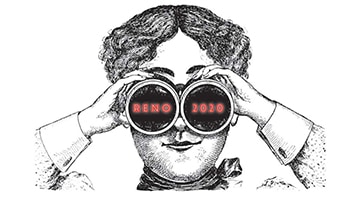GII-69 Eagle – Cornucopia Flask
GII – 69
Eagle – Cornucopia Flask
Possibly Early Pittsburgh District
Yellow-Green Half Pint
Provenance: Anonymous
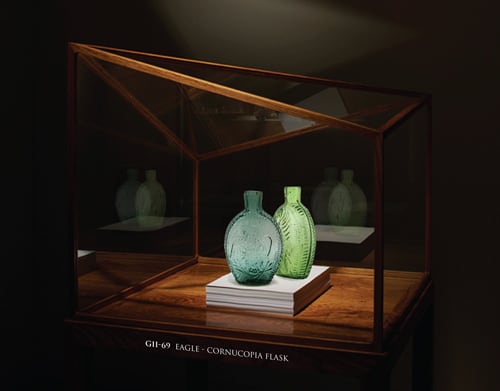
We are pleased to have on display in the museum Historical Flask Gallery examples of the half-pint GII-69, Eagle-Cornucopia flask. These wonderful pocket flasks came from an outstanding mold and are very impressionable with the strong eagle and cornucopia motifs. The glassworks is unknown though they could possibly be from the Pittsburgh District from 1820 to 1840.
The American eagle was chosen to decorate more flasks than any other single motif in the entire repertoire of flask design elements. It is not hard to understand why, as our young country chose the American bald eagle as its emblem to signify strength, power, and sovereignty on the Great Seal of the United States.
The cornucopia brimming with flowers or produce or both is an ancient motif used throughout time to symbolize prosperity and plenty. On historical flasks, the overflowing cornucopia certainly was a purely decorative element but also reminded one of our young country’s good prospects, especially in the first half of the 19th century. Our GII-69 cornucopia is interesting because it is inverted, spilling its plenty towards the bottom of the flask which is symbolic and suggestive of its contents running down the flask owner’s gullet.
The GII-69 Eagle-Cornucopia flask has designs on oval panels banded at the top and sides by beading parallel to that on the edges. The flask features an embossed American eagle, with its head erect and an abnormally large beak with its head looking left and turned slightly upward. The left wing is open while the right wing is foreshortened to give the appearance of a more three-dimensional figure. Three arrows or thunderbolts are in the right talon and an olive branch is in the left talon. There is diagonal short ribbing at the bottom, beneath the eagle motif.
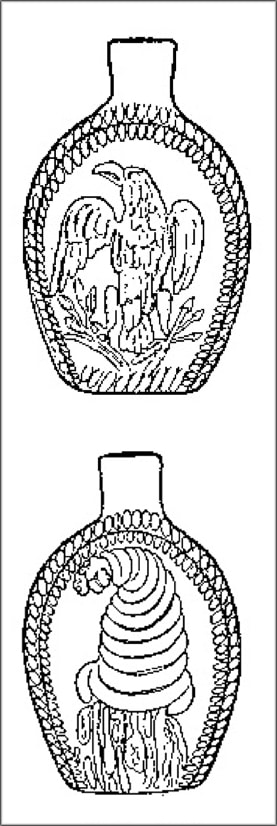
The reverse side of the flask has an inverted cornucopia with produce that is not recognizable. The cornucopia is coiled to the left with twelve ribs and is somewhat more slender than the cornucopia represented on the GII-11 through GII-14 flasks. The short diagonal ribbing does not occur at the base as it does on the obverse side.
Both sides of the flask have edges with horizontal beading with a vertical medial rib. The half-pint flask has a plain lip and a pontil mark. The scarce flask can be found in aqua, light green, light-medium emerald green, clear green, pale blue-green, clear, and amethystine which is rare, and yellow-green, pale lavender, and moonstone which is considered extremely rare.
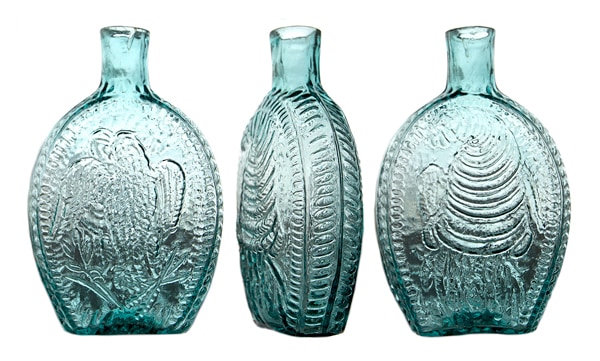
Primary Image: The GII-69 Eagle-Cornucopia flask imaged by the FOHBC Virtual Museum midwest studio by Alan DeMaison.
Support: Reference to American Bottles and Flasks and Their Ancestry by Helen McKearin and Kenneth M. Wilson, Crown Publishers Inc., New York, 1978.
Support Images: Auction Lot 50: Eagle – Cornucopia Historical Flask, probably Pittsburgh district, Pittsburgh, Pennsylvania, 1820-1840. Bluish aquamarine, sheared mouth – pontil scar, half pint; (just a hint of exterior high point wear). GII-69 A bold impression and attractive mold design. Fine condition – Norman Heckler, Norman C. Heckler & Company
Support Images: Auction Lot 104: Eagle – Cornucopia Historical Flask, probably early Pittsburgh district, Pittsburgh, Pennsylvania, 1820-1840. Deep aquamarine, sheared mouth – pontil scar, half pint; (1/2 inch fissure near tip of cornucopia, 1/16 inch flake from mouth edge). GII-69 A scarce early flask with a fancy mold design. – Norman Heckler, Norman C. Heckler & Company
Support Images: GII-69 flask: Clear green glass; mold-blown; plain lip, pontil mark. Obverse: designs on oval panels banded at top and sides by beading parallel to that on edges. American Eagle with abnormally large beak, head erect and turned to left; wings partly raised and left foreshortened. Thunderbolt (three arrows) in eagle’s left talons, olive branch in right. The eagle itself is similar to that on GII-13. Short diagonal ribbing at base of flask. Reverse: inverted cornucopia, coiled to left, filled with produce; cornucopia has twelve ribs and is more slender in form than that on GII-11, GII-12, GII-13, GII-14. The short diagonal ribbing is lacking at base. Edges: horizontally beaded with vertical medial rib. Provenance: McKearin Antiques – Corning Museum of Glass
Support Image: Auction Lot 119: EAGLE – CORNUCOPIA, (GII-69), Pittsburgh, District, Pittsburgh, Pennsylvania, ca. 1835 – 1845, bluish aqua half-pint, open pontil, sheared and tooled lip. About perfect. Deep bluish color, strongest possible impression and only a slight touch of wear. This is the variant that has sets of beads on both the Eagle and Cornucopia panels. Rated as scarce, but rare in this fine condition! – Jim Hagenbuch, Glass Works Auctions, Auction #149
Join the FOHBC: The Virtual Museum is a project of the Federation of Historical Bottle Collectors (FOHBC). To become a member.


